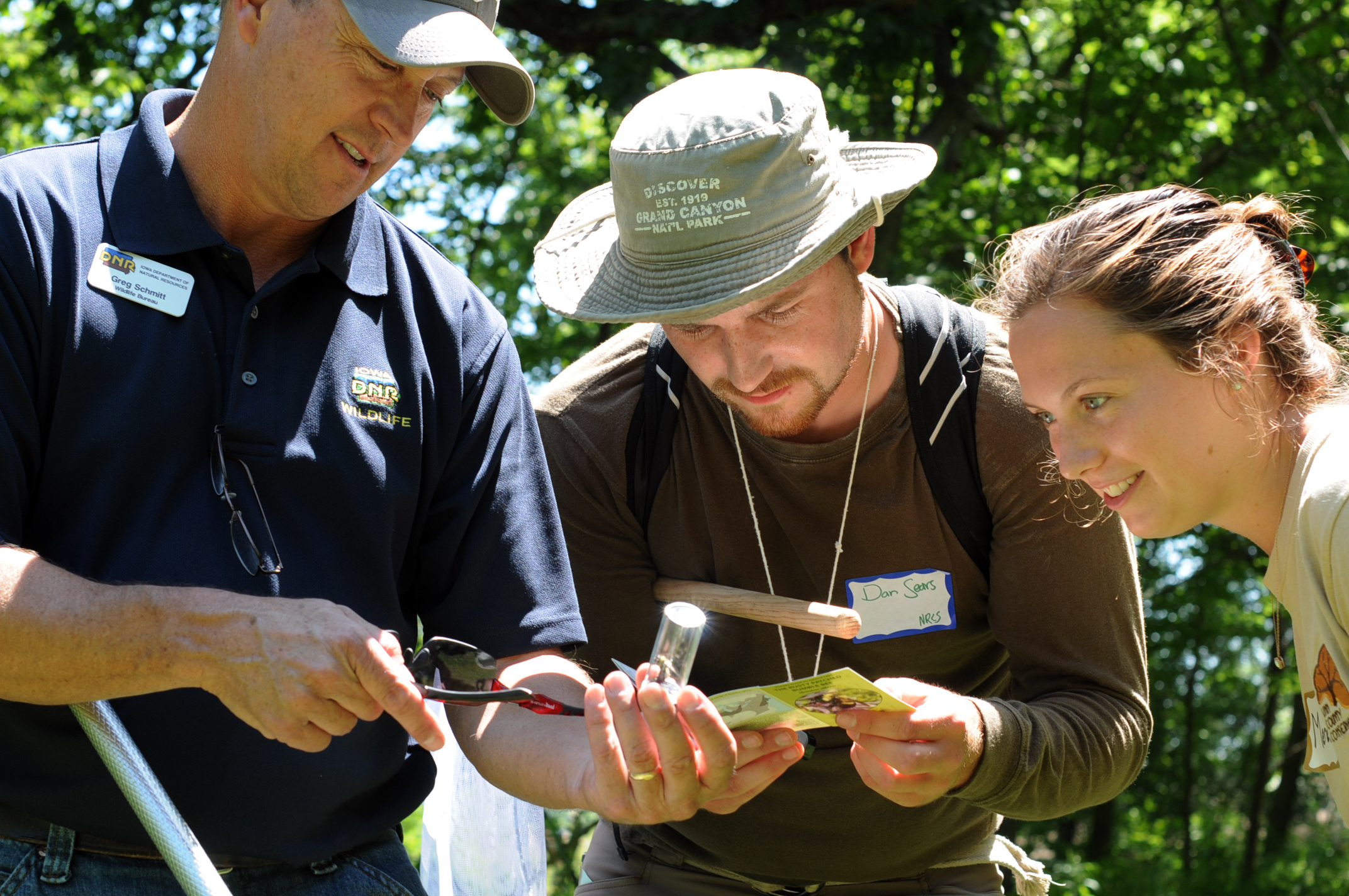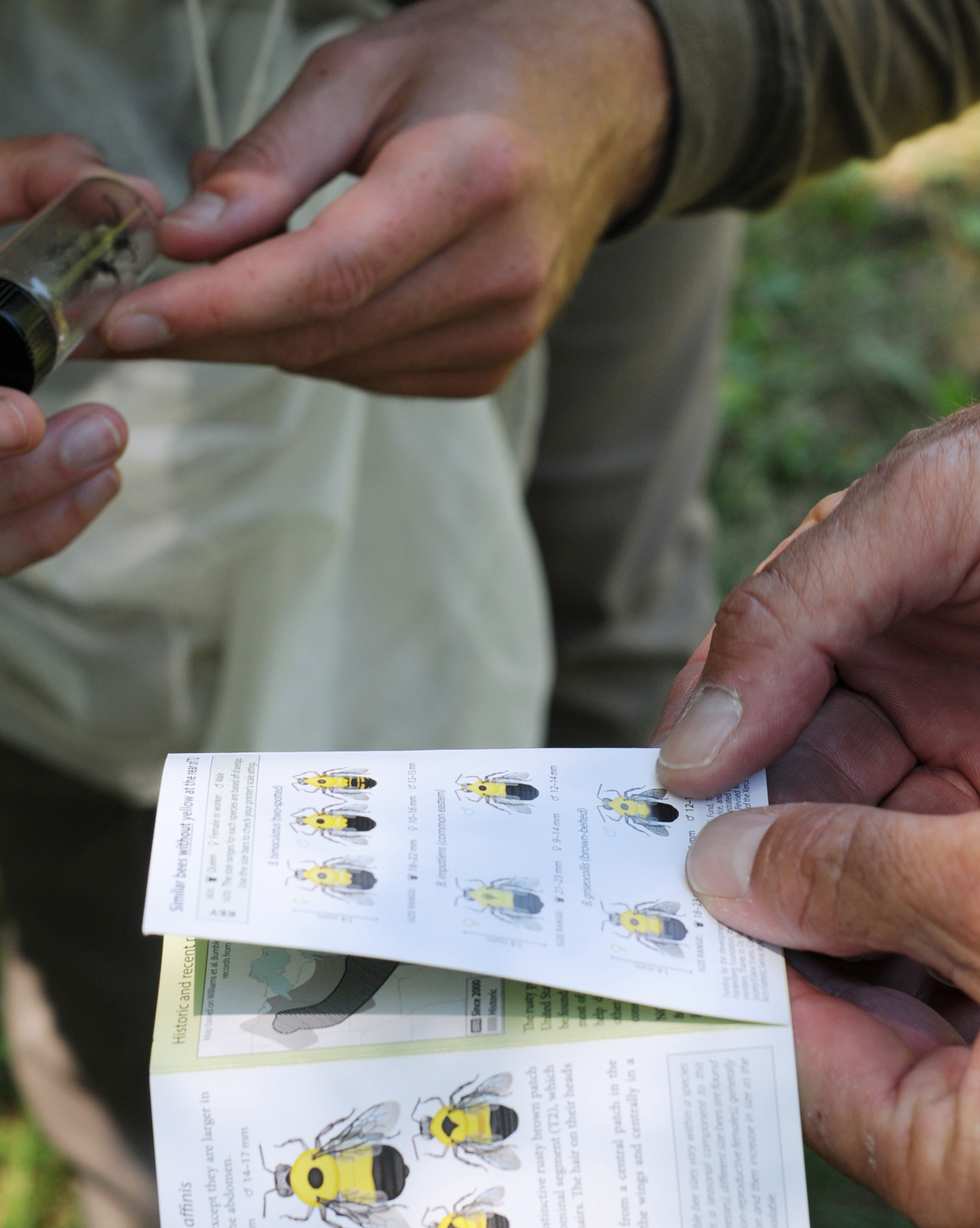As Margaret Mead once said, “Never doubt that a small group of thoughtful, committed (people) can change the world; indeed, it is the only thing that ever has.” This certainly held true on a warm, steamy day in eastern Iowa on August 1.

I, along with two other natural resource professionals from the Iowa Department of Natural Resources (DNR) and the United States Fish and Wildlife Service, spent the day teaching more than 50 fellow natural resource practitioners about the biology, ecology, and identification of Iowa’s bumble bees, as well as specifics on the federally endangered rusty patched bumble bee (Bombus affinis). The day was geared towards learning about bumble bees and encouraging community science through Bumble Bee Watch, followed by time in the field. The outdoor portion was aimed at surveying bumble bees with the hopes of discovering the rusty patched bumble bee at a new location.
The workshop took place at Wickiup Hill Learning Center, a nature center managed by the Linn County Conservation Board. Linn County has recent records of the rusty patched bumble bee, but it was still a gamble picking the Wickiup Hill Learning Center specifically, because no sightings had been reported at or near the site of our workshop. Despite not having a known record, we determined the learning center had suitable habitat for this endangered bumble bee—based on the prairie reconstructions and surrounding riverside woodland habitat. Nearly all the recorded sightings of the rusty patched bumble bee in Iowa fall within a river corridor.

In the afternoon, our participants were divided into three groups—equipped with insect nets, vials, and small Tupperware containers—and were led in a survey of the area. Two of the three groups remained on the Wickiup Hill property, while the third group crossed the road to explore the Chain–O–Lakes Wildlife Management Area (WMA), a prairie reconstruction owned and managed by the Iowa DNR. Over the course of nearly two hours in the field surveying, we collectively found seven species of bumble bees—representing half the species known to Iowa. Among them was a rusty patched bumble bee!
A female worker rusty patched bumble bee was scooped up by an insect net while foraging in a sea of partridge pea (Chamaecrista fasciculata) in the Chain–O–Lakes WMA. She was identified and photographed by Seth Moore of the Iowa DNR, and the group with him was ecstatic. This was the cherry on top of a very productive, exciting day!
There is no better feeling than to spend months planning, preparing, and advertising for an event, with many goals in mind, and being able to accomplish every single one of those goals as a team. Our workshop was well-received by participants, logistics were smooth as butter, the location was optimal, and not only did we find a great diversity of bumble bee species, we also found a new rusty patched bumble bee record for the state of Iowa. The energy from the participants in the field was uplifting, and the amount of growing interest in bumble bees throughout Iowa is both amazing and inspiring. When we learn together, work together, and grow together, anything is possible.
A special thanks goes out to the Iowa Department of Natural Resources and Linn County Conservation Board for partnering with the Xerces Society to make this idea a reality!
Further Reading
Learn more about the rusty patched bumble bee.
Learn more about the Xerces Society’s Pollinator Conservation Program.
Find a workshop, talk or other event in your area!




